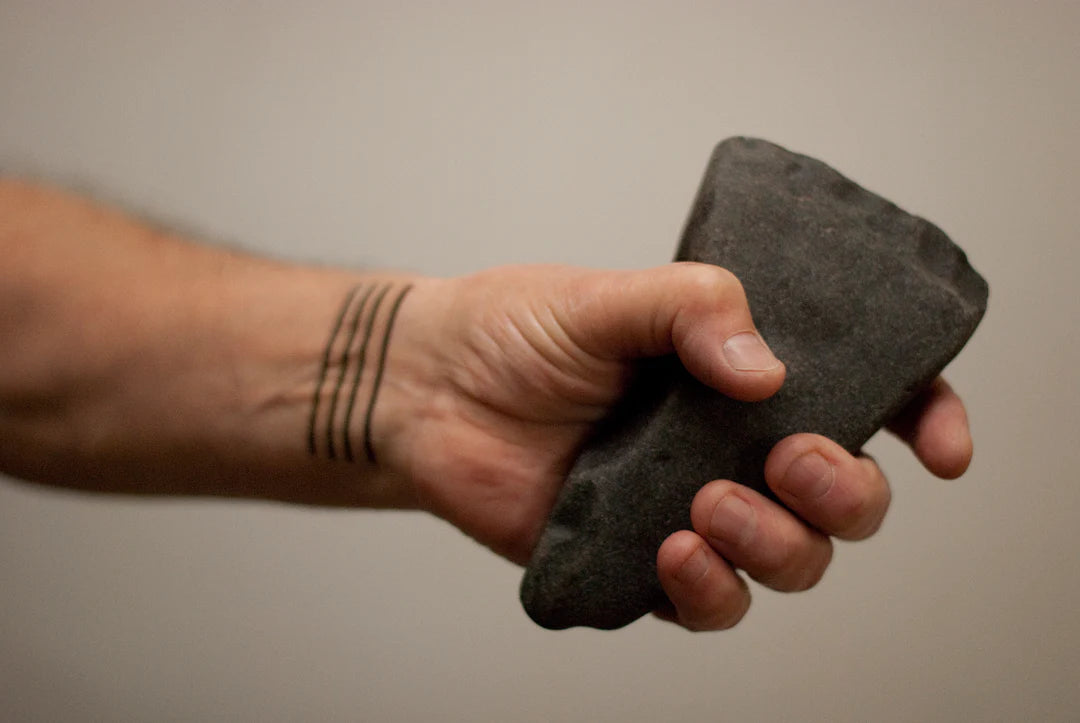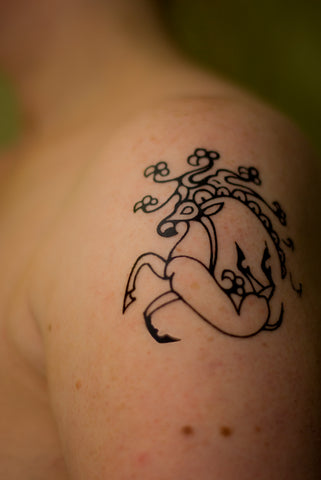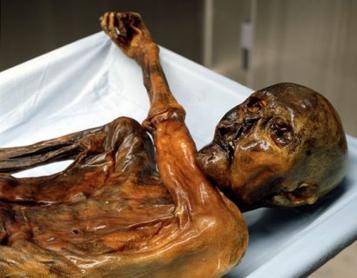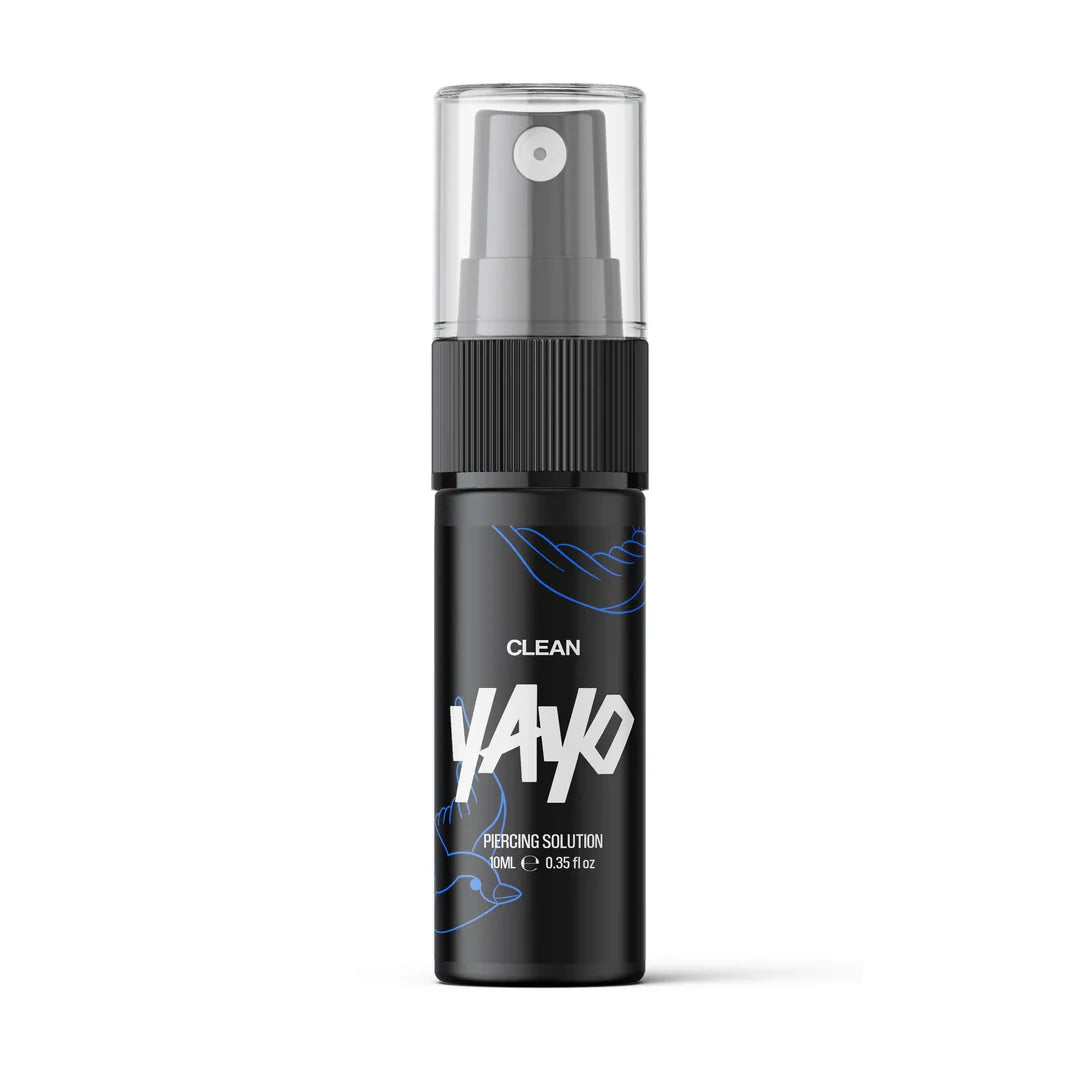The ancient history of tattooing from ice mummies to Eygpt

Archaeological evidence proves that tattooing is an ancient art form that dates back at least 6000 years. Across the globe tattooing played a vital role in many ancient societies; from body decoration, to status symbols to the mark of a great healer. Tattooing in prehistoric life was as vital and vibrant as it is today.

In modern Britain tattooing is just another fashion trend driven by celebrity culture and social media. In previous decades it used to be the mark of bikers, sailors and the criminal class but tattooing has a much longer history that stretches back beyond written records. Tattooing has an ancestry that dates back to the Stone Age and it was widespread across the Europe, until it was driven underground by the expansion of the Roman Empire and its domineering culture. Far from pioneering a new trend today’s tattooists are reconnecting with a key part of British heritage.

Hand tapping and hand poking are two ways of applying tattoos without using machines. Ink is delivered under the skin through needles traditionally fashioned from wood, bone or antler. Today many still practice this technique though they often employ modern metal needles. In recent times these hand applied techniques have re-emerged in the UK through cultural channels linked to South East Asia. The Far East may have kept the ancient art of tattooing alive but there was a time when tattooing was as widespread across Europe as it is today. Indeed historical and archaeological evidence points to tattooing being ubiquitous from the west coast of Greenland to the border lands between modern day Russia and China.
The problem with rebuilding the past is that very little survives the ravages of time.

During the European Iron Age (1200 BCE to 400 CE) in what is modern day Scotland, tattooing was so popular with the indigenous people that the Roman’s named the inhabitants the Picts; a word which derives its origin from the Latin word Picti which means ‘painted or tattooed people’. Celtic art has in modern times become widely associated with the heritage of Scotland, Wales and Ireland yet in truth it was part of an artistic style and language (called La Tene art) which was widespread across the whole of Europe. Archaeologist Barry Cunliffe believes the widespread archaeological finds of La Tene art in the UK demonstrates that Britain and Europe were part of a common market in which materials, artifacts and ideas spread freely. Roman manuscripts indicate that European people from Celts to Goths and Gauls were tattooed and decorated with body art.
The problem with building a picture of the past is that very little survives the ravages of time. Written sources only go back so far and beyond these we are reliant on archaeological evidence. Artifacts made from ceramics survive untarnished in the ground, but objects made from metal, wood or other organic materials (bone, fur, plant matter etc.) will all decay unless specific environmental conditions are maintained.

For a human body to survive millennia requires exceptional conditions. Skeletons can tell us nothing of the tattoos that decorated their skin but tattoos can be preserved through mummification. Mummies are a treasure trove of archaeological evidence. While artificial mummification is not a practice that lends itself to the wet humid conditions of Europe, South America is a different story. Mummies from the Chiribaya culture of Peru, dating back to 1000 CE, show tattoos depicting frogs, humming birds and monkeys. The skill of the embalmers and a dry arid environment of Peru have frozen time allowing us to see the rich tattoo heritage of the Chribya. .
North Africa also has a climate suited to mummies. Tattoos have been discovered in Egypt on the bodies of several female mummies dating to 2000 BCE. The Pharaohs clearly valued the beauty of tattooing and it was most likely a sign of status and prestige.
For a human body to survive millennia requires exceptional conditions.

In the northern Europe the weather conditions do not suit the elaborate mummification practices of ancient Egypt but archaeologists have uncovered a different kind of mummy in the earth of Great Britain. Burial in peat bogs prevents the normal processes of decay through a combination of low temperatures, a lack of oxygen and the antibiotic properties of the chemicals in the peat. In Britain the Iron Age bog body of Lindow Man indicates a culture where body art was a common aspect of everyday life. Lindow man died sometime between 100 BCE and 100 CE and evidence indicates he was a tribal leader. While no tattoos were visible on the incomplete remains tests on his skin indicate the presence of high amounts of silica, aluminium and copper. This proves that his body would have been covered with paint of a blue/green hue thus supporting the Roman texts accounts of Great Britain’s’ blue painted warriors.
Further north it is the cold rather than the peat bogs that has preserved ancient tattoos. Ice mummies survive due to the constant cold that prevents the growth of bacteria that cause decay. The ice mummies of Qilakitsoq on the shore of Uummannaq Fjord in north-western Greenland date back to 1475 CE. In 1977 archaeologist’s uncovered graves containing the bodies of 6 women and 2 children which over a period of hundreds of years had undergone a natural freeze drying process. The state of preservation was so good that fine line tattoos were clearly visible on 5 of the female mummy’s faces. Face tattoos are currently enjoying a surge in popularity but 500 years ago they were an everyday aspect of life in Greenland.

In freezing temperatures of Russia lies perhaps the finest example of ancient tattooing. The Pazyryk ice mummies of Siberia predate the Greenland mummies and their bodies are decorated with the most detailed and well preserved tattoos so far uncovered by archaeologist. The mummies were excavated on the Ukok Plateau, a remote grassland area located in the Altai Mountains region of Russia near the borders with Mongolia, Kazakhstan and China. The bodies date back 2500 years and display tattoos of such intricacy and detail it is clear that the tattooists of the Pazyryk culture were highly talented and skilled artists.
It is the tools of ancient tattooing that survive long after the flesh has withered and the ink decayed.

The oldest ice mummy of all was discovered in 1991 when a body was uncovered at 3200 metres in the Austrian/Italian Alps. Initially believed to be the 10 year old remains of a stranded climber further investigation revealed the man died around the year 3300 BCE making him 5300 years old. This prehistoric ice mummy was nicknamed Otzi. Found with his body were a multitude of tools including a yew bow complete with quiver and arrows, the remains of fur clothing and a copper bladed axe. His body was also adorned with 61 tattoos consisting of parallel vertical blue lines and blue crosses. Otzi’s frozen body displays the earliest record of medical tattooing. Archaeologists believe his tattoos served a therapeutic purpose aimed at alleviating arthritis.
It is the tools of ancient tattooing that survive long after the flesh has withered and the ink decayed. At a late Copper Age site in South Eastern Europe delicate bone needles were uncovered suggesting the practice of tattooing. Archaeologists dated these needles to 4500-4250 BCE. When examined under the microscope the needles contained pigment residue of red ochre and charcoal. Ochre and charcoal are common materials traditionally used by cultures across the world to make tattoo ink.

Prehistoric people valued art as a means of communication, symbolism and decoration. By examining cave paintings, rock engravings, carved figurines, jewelry, tools and weapons we can get an impression of the stylistic language of Stone Age cultures and infer that their tattoos would have followed similar designs. From what has survived it is clear that tattooing was as important and popular in prehistory as it is today.
A final thought from the author: "We may know how stone age people made their tattoos but we have no idea how they healed them; probably with sheep grease and monkey brains for all we know. While tattooing hasn't moved too far from its ancient roots tattoo aftercare certainly has. If only we had a time machine to go back to prehistoric Europe and give the Otzi a tub a Yayo. I'm sure his tattoos would look even more spectacular with a little helping hand from Yayo."
Yayo... its a family thing.








